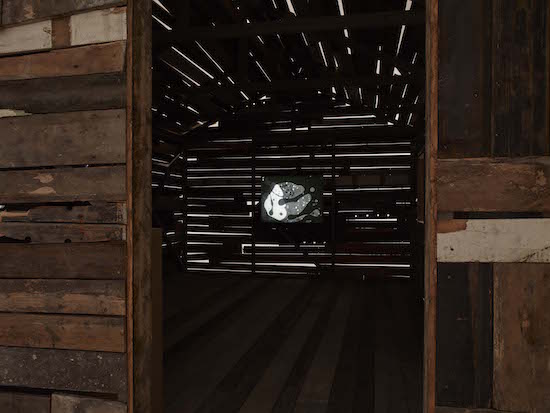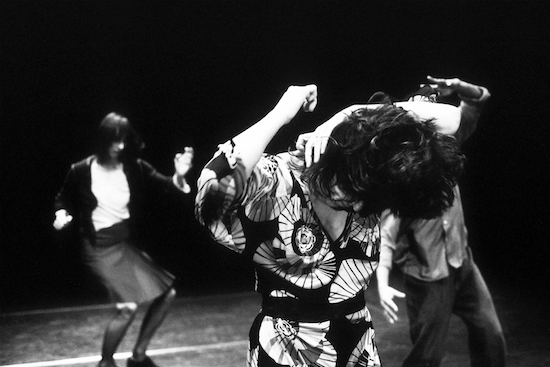One winter’s night in early 1842, Joseph Mallard William Turner strapped himself to the mast of a steamship in the midst of a storm in order to experience nature in all its sublime majesty. The experience is recorded in his deeply impressionistic oil painting of later the same year, Snow Storm – Steam-Boat off a Harbour’s Mouth. So, at least, the story goes.
Some have cast doubt on the truth of the tale, what with it bearing so close a resemblance to an earlier story told by the painter Joseph Vernet. Whether fact or fable, this tale of Turner’s voyage – and of the physical extremes he endured for no other purpose than to “show what such a scene was like” – holds a guiding hand on the tiller of a new exhibition of works by Joachim Koester, alongside some by Turner himself, at Margate’s Turner Contemporary gallery.
Turner, confesses Koester to me when we sit down in a side room on the gallery’s ground floor, “was very much an artist we discussed” when he was a student at the Royal Danish Academy of Art in the mid-80s. Later, as he moved more into photography, film, and installation, he “was not so much on my mind.” But the English landscape painter stayed with him somehow for the sense of “freedom” in his skies, “this hazy wash, close almost to monochromes.”
Koester’s own formative voyages were more “interior journeys,” he says. “Those are probably the ones that are the most prominent in my mind.” Amongst Koester’s older works on display in Margate, you’ll find tributes to High Times magazine and the legendary Club des Hashischins of Baudelaire and Delacroix, as well as animated films composed of the mescaline drawings of the Belgian surrealist Henri Michaux.
“I never really made this connection to my artwork before,” he said to me, “but the fact that I have always been going elsewhere in my mind. Like while I was between sleep and awake. I always felt comfortable in that area. I always felt like I knew this area very well. And there I have been to marvellous places – in deep space or the bottom of the sea.”
The most explicit journey amongst Koester’s works here, however, is to be found in one of the very newest on display. For The Department of Abandoned Futures (2015), visitors are invited to lie down on a foam mat perched atop a broad wooden pallet, put on a pair of headphones and “enjoy the hypnotic journey.”
“Take a deep breath in… And relax,” the voice of Charles Parker intones towards the beginning of what feels at first like a guided meditation tape. This, indeed, is how Koester refers to it: “the meditation piece.” But there is something slightly darker going on here, too, something altogether more critical.
After a good ten minutes of entreaties to relax our various extremities, an extended pause concludes with a murmured, “good” and we are then taken on a more literal journey, from a street, to a building, and deep into its basement. Here, after a long flight of stairs, we finally find ourselves in the quasi-officious Department of the work’s title, a room stuffed with boxes containing “drawings, manuscripts, photographs, films, objects, visions, and voices … blueprints for social interactions that never took place … inventions and drawings for cities that were never built.”
There is the suggestion of something bureaucratic about this department. Like something out of Kafka, the Department of Abandoned Futures is just one among many departments buried in “a huge grey concrete building” in “a city that you have never visited before”. But as the hypnotic preamble makes clear, this is a bureaucracy of the mind – the subconscious as a greying, mildewed sorting office.
“I think,” Koester says, when I ask him about his ideas about our own lost futures, “that there were a lot of times in history when things could have gone the other way and a different future could have happened. And I think we are at a point where we desperately need ideas – because it seems like we have this global economy, but we are stuck in the same place more or less. It’s just there. Art wont provide a direct solution, but art might point to a space where we can start to think differently.” In The Department of Abandoned Futures, we are told about “a whole section dedicated solely to the arts.”

Photo credit Stephen White
Coming to in the North Gallery, after spending almost twenty-five minutes isolated in the acoustic space of this work, I look to the watercolours on the wall – Turner’s ‘colour beginnings’ of the early nineteenth century with their hazy, impressionistic washes of colours – and can’t help but see an odd kind of abandoned futurism here, too. It is as though, in the 1822 of Study for Rokeby, in the c.1807–19 of A Sea Piece, Turner had already glimpsed a little something of Philip Guston, Franz Kline, and Mark Rothko.
In the middle of this room, there is a rough-hewn shed, erected, by the looks of it, from drift wood gathered on the beach outside. “This is my own favourite vantage point to look through the show,” Koester announces, on the threshold of this hut, as he guides the assembled press corps about the exhibition on the day of the opening. Inside the shed, a film is playing – Koester’s The Other Side of the Sky (2015), a 16mm projection of swirling liquids, much like those used by psychedelic groups of the late 60s.
Through a window in the hut we can see a single work of Turner’s, a small pencil drawing called Sailing Boat in a Squall whose faint graphite shading is almost entirely obscured by splatters. In the technical notes for the Tate’s official catalogue entry for this work it states “The sheet is conspicuously discoloured, stained and spattered with black ink.” From Koester’s preferred vantage point, these “conspicuous” marks are really all you can see of it.
“I think that particular Turner,” Koester says to me later of this work, “the point where you get away from motive, you get closer to the material, the fact that you are really painting, you are putting paint on the material. So that one, the one you mentioned, is the most material. It’s almost on the brink of just that. Just being what looks like some scratches or something that fell almost randomly on a piece of paper. In those works, in Turner, I see this desire to even bypass looking at the sky and just be absorbed in the paint and in the paper. You can feel that.”
Back at the press view, looking from Turner’s Sailing Boat in a Squall to Koester’s The Other Side of the Sky, we begin to entertain, for a moment, the fantasy of Turner as some long-lifed Lazarus, persisting into the twentieth century and becoming a film-maker, making psychedelic light shows for rock bands at the UFO club or the Electric Circus. “He would have been the best of them all,” Koester concludes, a mischievous smirk playing across his lips.
Joachim Koester, The Other Side of the Sky, is at Turner Contemporary until 8 May


